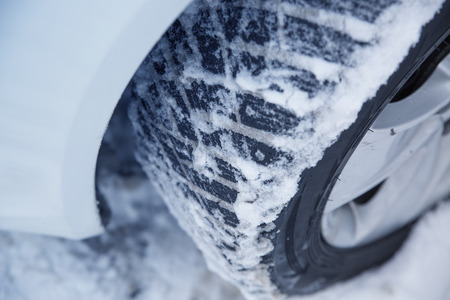1. Flat Batteries
Winter weather in the UK is notorious for putting extra strain on car batteries, often leaving motorists stranded with a car that simply won’t start. When temperatures drop, chemical reactions inside your battery slow down, making it harder for the engine to turn over. Older batteries or those that haven’t been maintained are especially vulnerable. To avoid being caught out on a frosty morning, it’s wise to carry out some DIY battery checks before winter sets in.
Why Do Car Batteries Fail in Cold Weather?
Low temperatures reduce a battery’s ability to hold charge and deliver power. Add to this the increased demand from heaters, headlights, and windscreen wipers, and your battery is working overtime just when it’s at its weakest. If your car is left unused for several days – a common scenario over the holidays – this can also accelerate battery drain.
DIY Tips for Keeping Your Battery Healthy
- Check Battery Terminals: Make sure terminals are clean and free from corrosion. A wire brush and a little baking soda can help keep them in good condition.
- Test the Battery Voltage: Use a multimeter to check voltage levels; anything below 12.4V could be a sign of trouble ahead.
- Keep It Topped Up: If you have an older, non-sealed battery, regularly check electrolyte levels and top up with distilled water if needed.
- Drive Regularly: Short trips don’t give your alternator enough time to recharge the battery fully. Try to take your car for at least one longer drive each week during winter months.
When to Replace Your Battery
If your battery is more than five years old or struggles to start even after maintenance, it may be time to invest in a new one. Many UK garages offer free winter battery checks – a smart move before the coldest weather arrives.
Frozen Windscreens and Locks
With frosty mornings a staple of UK winters, frozen windscreens and door locks are among the most common and frustrating problems faced by drivers. Not only can they delay your morning commute, but improper removal techniques may damage your vehicle’s surfaces or locking mechanisms. Here’s how to safely tackle these issues and prevent them from recurring throughout the winter months.
Effective De-Icing Methods
| Method | How to Use | Pros | Cons |
|---|---|---|---|
| Commercial De-Icer Spray | Spray directly onto the windscreen or lock, wait for ice to melt, then wipe clean. | Quick and easy; available at most petrol stations. | Chemicals may affect paintwork if overused. |
| Homemade Solution (e.g., 2/3 rubbing alcohol, 1/3 water) | Apply with a spray bottle to iced areas. | Cost-effective; gentle on glass. | May not be as quick as commercial products in extreme cold. |
| Plastic Ice Scraper | Gently scrape ice from windscreen using a dedicated tool. | No chemicals required; reusable tool. | Can scratch glass if used incorrectly or if grit is present. |
What NOT to Do
- Avoid pouring hot water on windscreens—rapid temperature changes can crack glass.
- Do not use metal scrapers or sharp objects, as these can permanently damage surfaces.
Preventative Tips for Frozen Locks and Glass
- Cover your windscreen overnight with a frost guard or even an old towel to reduce ice build-up.
- Apply a silicone-based lubricant to door locks before freezing temperatures set in. This helps repel moisture and keeps mechanisms moving smoothly.
DIY Maintenance Routine
- Check that your windscreen wipers aren’t stuck to the glass each morning before switching them on—forcing them can tear the blades or strain the motor.
- If you notice any chips or cracks in the windscreen, repair them promptly. Cold weather can cause existing damage to worsen quickly.
Tackling frozen windscreens and locks with these practical methods will help you avoid unnecessary delays and protect your car from costly repairs during the British winter. Consistent DIY care ensures you’re ready for whatever Jack Frost throws your way!
![]()
3. Tyre Problems
Cold snaps across the UK can wreak havoc on your tyres, leading to a whole host of winter driving problems. As temperatures dip, tyre pressure naturally drops, which not only affects fuel efficiency but also reduces your car’s grip on icy or wet roads. Underinflated tyres are more prone to punctures and can seriously compromise your handling, especially when navigating winding British lanes or motorways slick with frost.
Why Cold Weather Impacts Tyres
When the mercury falls, the air inside your tyres contracts, causing a noticeable drop in pressure. This can make your tyres look slightly flat and increase rolling resistance, putting extra strain on both your wallet and your vehicle. Moreover, standard summer tyres harden in low temperatures, reducing their ability to ‘bite’ into the road surface—this is particularly risky during early morning commutes or unexpected snow flurries.
How to Maintain Your Tyres in Winter
- Check Pressure Regularly: It’s a good habit to check tyre pressures at least once a week during winter months. Always use a reliable gauge and inflate them according to the manufacturer’s recommended settings (found in your owner’s manual or inside the driver’s door frame).
- Inspect Tread Depth: UK law requires at least 1.6mm of tread depth, but for winter driving, aim for 3mm or more for better traction.
- Look for Damage: Scan for any cuts, bulges, or embedded debris that could lead to punctures—cold weather can worsen existing weaknesses.
The Benefits of Switching to Winter Tyres
If you regularly drive in rural areas or face frequent frosts and snowfalls, consider investing in a set of winter tyres. These are made from a softer rubber compound and feature deeper grooves and unique tread patterns designed specifically for cold weather performance. Winter tyres stay flexible below 7°C, providing improved grip and shorter braking distances compared to standard tyres—a real advantage on slippery B-roads and hilly terrain common across the UK.
DIY Tip:
If you’ve got space in your garage or shed, it’s well worth keeping a spare set of wheels fitted with winter tyres. Swapping them over yourself saves time and money come November, plus you’ll be ready for whatever the British weather throws at you!
4. Faulty Heating and Demisters
A reliable heating and demisting system is absolutely essential for both comfort and safety during the UK’s cold, damp winters. When your heater or demister isn’t working properly, not only do you end up shivering behind the wheel, but steamed-up windows can seriously affect your visibility – making driving dangerous and even illegal if your view is obstructed.
Common Issues with Heating and Demisters
| Problem | Likely Cause | DIY Prevention/Troubleshooting |
|---|---|---|
| Heater blows cold air | Low coolant, faulty thermostat, or blocked heater matrix | Check coolant levels regularly; flush heater matrix every few years |
| Demister not clearing windows | Blower fan issues, blocked vents, or electrical faults | Inspect fuses and fan operation; clean vents; ensure air recirculation is off when demisting |
| Poor airflow from vents | Clogged cabin filter or debris in vents | Replace cabin filter annually (especially before winter); vacuum vent openings to remove dust/leaves |
| Electrical failure of heated screens | Blown fuse or broken element in rear/front screen heaters | Check relevant fuses; inspect visible lines for breaks; consult a specialist if unsure |
Routine Checks to Keep Your Car Toasty and Clear
- Top up Antifreeze: Ensure your coolant reservoir is filled to the recommended level with the correct mix of antifreeze – this helps prevent freezing and improves heater performance.
- Test the Blower Fan: Switch through all fan speeds to confirm each setting works. Any odd noises or dead settings may signal a worn-out motor or resistor.
- Inspect Vents and Filters: Dust and debris build up quickly in UK weather, so give vents a regular once-over and replace cabin filters before winter sets in.
- Use Air Conditioning: Surprisingly, using your car’s air con alongside heat helps dry out the air inside your car, speeding up demisting.
- Avoid Recirculation Mode: When trying to clear foggy windows, switch off recirculation. Fresh outside air will help clear moisture much faster than recirculated air.
If Problems Persist…
If your heater or demister still isn’t working after these checks, it may be time to consult a qualified mechanic. Remember, driving with misted-up windows isn’t just uncomfortable – it can earn you a fine under UK law for driving with obscured vision. Regular maintenance keeps you safe, warm, and legal on Britain’s chilly roads.
5. Visibility Challenges
During the British winter, visibility can quickly become a serious issue due to low sun angles, frequent rain, and road grit thrown up by passing vehicles. These conditions make it harder to see and be seen, increasing the risk of accidents. Proper maintenance and a few simple checks can make all the difference when driving in these tricky conditions.
Look After Your Wiper Blades
Your wiper blades are your first line of defence against rain and spray. Worn or split blades will leave streaks and reduce your view of the road. It’s good practice to inspect your wipers regularly for cracks or stiffness. If they squeak or fail to clear the windscreen effectively, replace them straight away—most UK motorists find changing blades a straightforward DIY job.
Top Up Washer Fluid with Antifreeze
Don’t forget your washer fluid! In colder months, always use a quality screenwash mixed with antifreeze to prevent it from freezing in the reservoir or on your windscreen. Never use plain water, as it can freeze and block the system just when you need it most. Keep a spare bottle of ready-mixed screenwash in your boot for top-ups on the go.
Maintain Clean Lights for Safer Driving
Dirty headlights and tail lights reduce both how well you can see and how visible you are to others, especially during those short winter days and long nights. Grit, salt, and muck can quickly build up on light lenses. Make it part of your weekly routine to wipe down all exterior lights with a damp cloth. For stubborn grime, a gentle car shampoo will do the trick. Don’t forget indicators and number plate lights—they’re just as important for safe winter motoring.
By staying on top of these simple maintenance tasks, you’ll significantly improve your visibility throughout the winter months—helping you stay safe while navigating the UK’s often challenging roads.
6. Warning Lights and Sensors
Cold winter weather in the UK can wreak havoc on your car’s warning lights and sensors, often triggering unexpected dashboard alerts. These issues are not only annoying but can also mask more serious problems if left unchecked. Understanding what these lights mean and how to respond can save you time, money, and unnecessary stress.
Common Winter-Related Sensor Issues
- Tyre Pressure Monitoring System (TPMS): Dropping temperatures cause tyre pressure to decrease, which may set off your TPMS warning light. This is a common occurrence in winter and usually means you need to top up your tyre pressures rather than replace a sensor.
- Battery Voltage Warnings: Cold snaps put extra strain on your battery, sometimes leading to voltage-related sensor alerts. If you notice flickering lights or slow starts, it could be time for a battery health check.
- ABS and Traction Control Lights: Ice and slush can interfere with wheel sensors. Dirt or ice build-up around the wheels may trigger false ABS or traction control warnings.
Troubleshooting and Maintenance Tips
- Check Tyre Pressures Regularly: Use a reliable gauge to check all tyres—including the spare—at least once a week during cold spells. Inflate them according to the manufacturer’s recommendations found in your owner’s manual or on the driver’s door sticker.
- Inspect Sensor Areas: Keep areas around your wheels clean to prevent ice or road grime from affecting ABS and traction sensors. A quick rinse with warm water can do wonders after a snowy or muddy drive.
- Monitor Battery Health: If you’re getting battery-related warnings, test the battery with a voltmeter or pop into your local garage for a free battery check. Replace older batteries before winter sets in to avoid being stranded.
When to Seek Professional Help
If warning lights remain illuminated after basic checks—especially engine management or braking system warnings—it’s best not to ignore them. Book your car in with a trusted mechanic as soon as possible, as driving with unresolved faults could compromise safety or cause further damage.
DIY Tip
A simple OBD-II scanner can help read fault codes at home, giving you a clearer idea of the issue before heading to the garage. Remember, while some fixes are straightforward, never take chances with critical systems in icy conditions.


